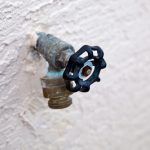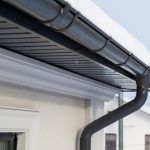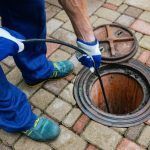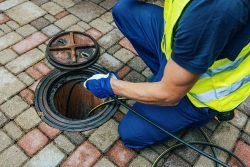Blog

Water heaters are an essential part of our daily lives, providing us with hot water for showers, washing dishes, and doing laundry. However, like any appliance, they have a limited lifespan and will eventually need to be replaced. But how do you know when it’s time for a new water heater? Here are some signs... View Article

A backflow preventer is a crucial component of any plumbing system. It serves the purpose of protecting the potable water supply from contamination and ensuring that water flows in the right direction. This device is particularly important because backflow can lead to serious health hazards and can even be life-threatening. In this blog post, we... View Article

Water pressure is an essential factor when it comes to the functionality and convenience of our homes. Whether it’s taking a shower, washing dishes, or watering plants, having adequate water pressure is crucial. However, many homeowners often encounter low water pressure issues, leaving them frustrated and seeking solutions. In this blog, we will explore some... View Article

When it comes to household drainage systems, most people are familiar with the concept of drain spouts. These are the pipes that are attached to the outer walls of homes and buildings, and are designed to carry away water from rain, snow, or other sources. But have you ever wondered where these drain spouts lead... View Article

Have you ever experienced the frustration of turning on your faucet only to find that the water is trickling out at a painfully slow rate? If so, you’re not alone. Many homeowners encounter this issue at some point, and it can be both annoying and concerning. In this blog post, we will explore some common... View Article

If you’ve been experiencing frequent clogs, slow drains, or sewage backups in your home, it might be time to consider hydro jetting your sewer line. Hydro jetting is a highly effective method of clearing clogs and blockages in your sewer line using high-pressure water. In this blog post, we will explore what hydro jetting is... View Article

Colorado Springs plumbers are often known for their skills in fixing pipes and unclogging drains, but they also possess a great sense of humor. As they navigate through different plumbing situations, they often find ways to make light of the challenges they face. In this blog post, we will share some hilarious jokes from plumbers... View Article

Orangeburg and clay tile are two types of materials that have been used in the construction of sewer pipes. While they both serve the same purpose of transporting wastewater, they have distinct differences in terms of composition, longevity, and overall performance. In this blog post, we will explore what Orangeburg and clay tile are, their... View Article

When it comes to clearing clogged drains and sewer lines, two popular methods used by professional plumbers are hydrojetting and using a snake. Both techniques have their own merits, but determining which one is better depends on various factors. In this blog post, we will explore the differences between hydrojetting and using a snake, and... View Article

